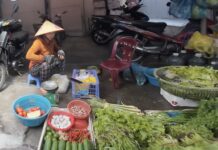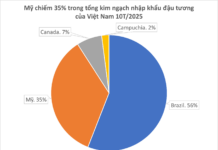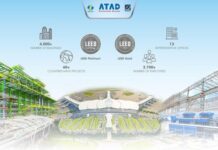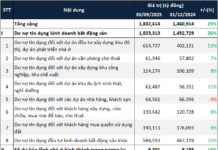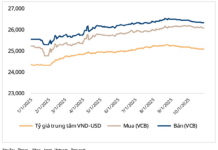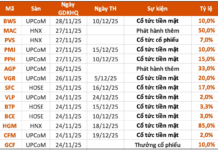Promising Industrial Zone and More
Dubbed the “land of a hundred crafts” with numerous villages known for their traditional crafts, 48 of which have been recognized as such by Hanoi, Thuong Tin has a significant advantage for industrial and small-scale industrial development.
Consequently, in recent years, Thuong Tin has prioritized investment in building industrial zones (IZs) and craft village IZs. As a result, there are now 11 IZs operating stably in the district, covering a total area of over 195 hectares, with an occupancy rate of 100%.
Notable among these are Ha Binh Phuong IZ 1 (41.6ha), Ha Binh Phuong IZ 2 (9.1ha), Duyen Thai IZ (18.4ha), Quat Dong IZ (23.6ha), Quat Dong Expanded IZ (43ha), Lien Phuong IZ (18.8ha), Duyen Thai Lacquerware IZ (12.6ha), and the Ninh So Small Industrial Zone (TTCN) (5.1ha), the Van Diem TTCN (7.2ha), the Tien Phong TTCN (7.6ha)…
Regarding the effectiveness of the IZs in the locality, Bui Cong Than, Vice Chairman of Thuong Tin District People’s Committee, said that the 11 IZs in the area currently attract around 800 enterprises and production and business households, providing jobs for approximately 10,000 workers. About 350 enterprises and production and business households work in the craft village IZs, offering employment to more than 3,000 workers with an average income of approximately VND 100 million per person per year.
The development of IZs has brought significant benefits to businesses and workers, and Thuong Tin is now building and expanding three new IZs: Thang Loi IZ, Tien Phong IZ Phase 2, and Ninh So IZ Phase 2.
Thuong Tin is not only the “industrial capital” of Hanoi, but it will also become a district in Hanoi’s capital planning until 2030 and a gateway to the southern part of Hanoi. The revised plan for Hanoi’s overall development until 2045, with a vision towards 2065, also includes plans for a southern city.
In its strategy to become a gateway district connecting the southern city and the capital’s core, Thuong Tin’s transportation infrastructure has made significant advancements. The essential North-South expressway, Pháp Vân – Cau Gie, and National Highway 1A, pass through Thuong Tin. These two highways are considered vital links in the North-South traffic circle, connecting the South with the Capital and northern provinces like Bac Ninh, Hai Phong, and Quang Ninh.
Along with these highways, the 4th Ring Road, which is 58.2 kilometers long and passes through seven districts: Soc Son, Me Linh, Dan Phuong, Hoai Duc, Thanh Oai, Thuong Tin, and Ha Dong, will be a significant development driver.
In 2024, the 4th Ring Road – Capital Region project is one of the country’s top priority projects that the city is concentrating on implementing
Thuong Tin will soon have the capital’s second airport in addition to the expressway. According to the document submitted to the City People’s Council for consideration and approval of the Planning Adjustment Project for Hanoi’s General Planning until 2045, with a vision towards 2065, the second airport in the metropolitan area will be located south of the Tay Bac expressway – National Highway 5B, between the Pháp Vân- Cau Gie Expressway, National Highway 1A, the North-South high-speed railway, the North-South Reunification railway, and the southern economic traffic axis. Experts believe that the construction of a second airport in the capital, which will be directly adjacent to Thuong Tin, will boost economic growth across the area.
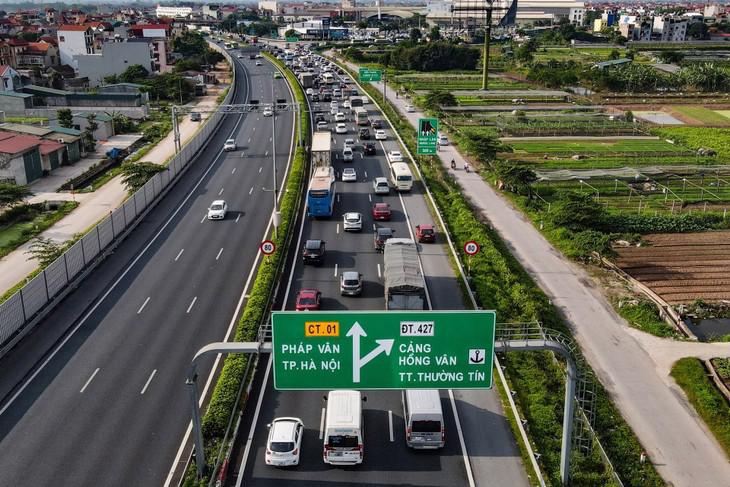
Expressway huyết mạch Pháp Vân- Cau Gie running through Thuong Tin.
Real Estate Growth Potential
Experts believe that the real estate market in Thuong Tin will boom due to its strategic development in industry, infrastructure, and planning. Notably, land prices in Thuong Tin are predicted to surge as it prepares to become a district, following the pattern of real estate price increases seen in other areas designated to become districts like Dong Anh, Gia Lam, and Hoai Duc in recent years.
It is still fresh in our memories that just five years ago, Hoai Duc real estate was not on most homebuyers’ minds. However, the news that it would become a district, along with significant development in transportation infrastructure, quickly turned the area into a “hotspot” for real estate appreciation. While the average condominium price in Hoai Duc was once only VND 18 million/m2, it has since increased by 30 million/m2, and several new condominium projects have emerged with prices climbing to VND 70 million/m2. Prices for low-rise villas in urban areas have skyrocketed from VND 60 million/m2 to VND 200 million/m2 in less than five years.
The price increases in Dong Anh and Gia Lam were similar, as major real estate developers flocked to these areas, resulting in a 50-100% increase in property values within just five years. In Dong Anh, prices have more than doubled since 2019. Even in outlying areas like Gia Lam, villa prices have reached VND 200-250 million/m2, while condominium prices hover around VND 60-70 million/m2.
While prices in Hanoi’s outlying areas have already peaked, Southern Hanoi appears to be lagging behind. Notably, real estate prices in Thuong Tin remain relatively low. For instance, Him Lam Thuong Tin, the most recent project in Thuong Tin, recently set its prices for low-rise homes and shophouses at just over VND 100 million/m2. Real estate prices in the vicinity of Thuong Tin remain relatively static despite the resurgence of Hanoi’s real estate market.
Experts predict that if the Western region experienced exponential growth in 2010, and the Eastern region experienced its most significant growth spurt in 2020, then 2030 will belong to the Southern region, whose strategic planning is paving the way for growth.. In terms of the Southern region, Thuong Tin is a rare gem in Hanoi where real estate prices are still affordable. We can expect significant changes in the near future, as prices rise in tandem with infrastructure investments. As infrastructure improves, real estate prices in Thuong Tin will “accelerate,” bringing the area in line with other parts of Hanoi.
“Significant plans for the Southern region have had a major impact on Thuong Tin’s real estate market, also serving as a catalyst for the area’s future growth. “Currently, many established businesses are moving into Thuong Tin to capitalize on growth prospects, and several projects are already on the market to attract investors. This is an excellent opportunity for investors with foresight,” said Nguyen Van Dinh, Vice Chairman of the Vietnam Real Estate Association.



